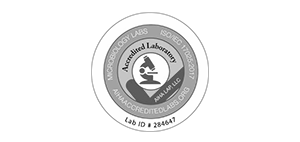
How Do You Test For Mold Smell?
As a homeowner, it’s important to ensure that your living environment is free from any harmful substances, including mold. Mold can not only cause structural damage to your home but also lead to various health problems. Testing for mold smell is a crucial step in identifying and addressing mold growth. In this section, we will discuss various methods to effectively test for mold smell in your home.
Key Takeaways:
- Identifying mold smell is crucial for maintaining a safe and healthy living environment.
- Visual inspection and using your sense of smell are primary methods to test for mold odor.
- If you have difficulty identifying mold smell or suspect extensive mold growth, seek professional mold testing services.
- Take immediate action upon confirming the presence of mold smell to prevent health issues and further damage to property.
Understanding Mold Smell
Before you begin testing for mold smell, it’s important to understand how it presents itself. Mold often produces a distinct musty odor that can be described as earthy or damp. Identifying this specific smell is the first step in detecting the presence of mold in your home.
Visual Inspection for Mold
The first step in testing for mold smell is performing a thorough visual inspection. Take note of any areas prone to moisture, such as bathrooms, kitchens, and basements. Look for any visible signs of mold growth, including black or green patches on walls, ceilings, or corners. Be sure to also check inside cabinets, closets, and behind furniture.
While mold can sometimes be hidden, a visual inspection can provide valuable clues about the presence of mold. If you notice any suspicious areas or suspect mold growth, it’s important to take immediate action to prevent further damage and health issues.
How to Conduct a Visual Inspection for Mold:
– Look for any signs of water damage, such as discoloration or warping on walls, ceilings, or floors
– Check for visible signs of mold growth, including black or green patches on surfaces
– Inspect any areas prone to moisture, such as bathrooms, kitchens, and basements
– Examine any areas with poor ventilation or high humidity
By conducting a visual inspection for mold, you can identify potential mold problems and take immediate action to prevent further damage to your property and health issues. However, if you have difficulty identifying mold smell or suspect extensive mold growth, it’s advisable to seek professional mold testing services.
Using your Sense of Smell
Your sense of smell can be a powerful tool in testing for mold odor. Start by walking through your home, paying close attention to any areas where you suspect mold growth. Take note of any musty, damp, or unpleasant odors. If you consistently detect such smells in certain areas, it may indicate the presence of mold. Keep in mind that some types of mold may not produce a strong smell, or may have a different odor than the typical musty smell.
If you detect a strong mold smell, it’s important to take immediate action to identify and address the mold problem. This can involve moving furniture or household items to inspect hidden areas, such as behind walls or underneath carpets. If you are unable to locate the source of the smell, professional mold testing may be necessary to accurately detect the mold presence.
Professional Mold Testing
If you are unsure how to detect mold smell or suspect extensive mold growth, it is highly recommended to seek professional mold testing services. Certified mold inspectors have the expertise, equipment, and training to accurately detect and assess mold presence in your home.
During a professional mold inspection, an inspector will conduct a comprehensive assessment, including air and surface sampling, moisture evaluation, and thermal imaging. These tests can determine the type and concentration of mold present in your home and the scope of remediation required.
Professional mold testing also provides an objective evaluation of the extent of mold damage and the risk it poses to your health. Based on the results of the inspection, a mold remediation plan will be devised to safely remove the mold and prevent further growth.
Remember that mold can be hazardous to your health, and remediation may require special protection and equipment. To ensure a safe and effective mold removal process, always rely on certified and experienced mold remediation professionals.
Taking Immediate Action
Once you have confirmed the presence of mold smell, it’s crucial to take immediate action to ensure the safety of your home and protect your family’s health. Mold spores can cause respiratory problems, allergies, and skin irritation, among other health issues.
You need to consult with a professional mold remediation expert to safely remove the mold and address underlying moisture issues to prevent future mold growth. Mold remediation professionals use specialized equipment and chemicals to ensure that all mold is removed, and the risk of future growth is minimized.
Ignoring mold growth can lead to further damage to your property by compromising its structural integrity. Mold can weaken the structure of the walls and ceilings, leading to potential costly repairs in the future.
If you suspect mold growth in your home, it’s important to take immediate action and have a professional mold remediation expert assess and address the issue. By taking swift action, you can ensure a safe and healthy living environment for you and your family.
FAQ
Q: How do you test for mold smell?
A: There are several methods you can use to test for mold smell in your home. Some effective methods include visual inspection, using your sense of smell, and seeking professional mold testing services.
Q: What is the first step in detecting mold smell?
A: The first step in detecting mold smell is understanding how it manifests. Mold often produces a distinct musty odor that can be described as earthy or damp.
Q: How can visual inspection help in testing for mold smell?
A: Visual inspection is a primary method to test for mold smell. By examining areas prone to moisture and looking for visible signs of mold growth, such as black or green patches on walls or ceilings, you can gather valuable clues about the presence of mold.
Q: How can I use my sense of smell to test for mold odor?
A: Walk through your home and pay close attention to any areas where you suspect mold growth. Take note of any musty, damp, or unpleasant odors. If you consistently detect such smells in certain areas, it may indicate the presence of mold.
Q: When should I consider seeking professional mold testing services?
A: If you have difficulty identifying mold smell or suspect extensive mold growth, it’s advisable to seek professional mold testing services. Certified mold inspectors can conduct comprehensive tests, including air sampling, surface sampling, and moisture evaluation, to accurately detect and assess mold presence in your home.
Q: What should I do once I have confirmed the presence of mold smell?
A: Once you have confirmed the presence of mold smell, it’s crucial to take immediate action. Mold can lead to various health issues and further damage to your property. Consult with a professional mold remediation expert to safely remove the mold and address the underlying moisture issues to prevent future mold growth.







